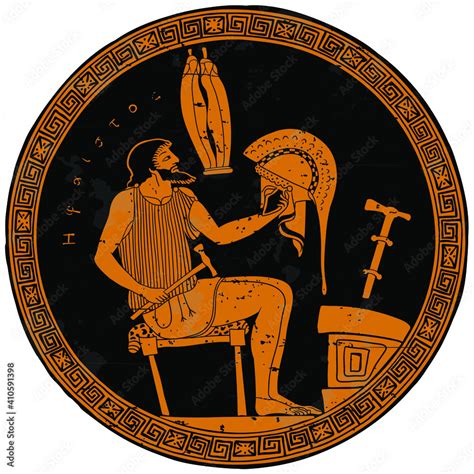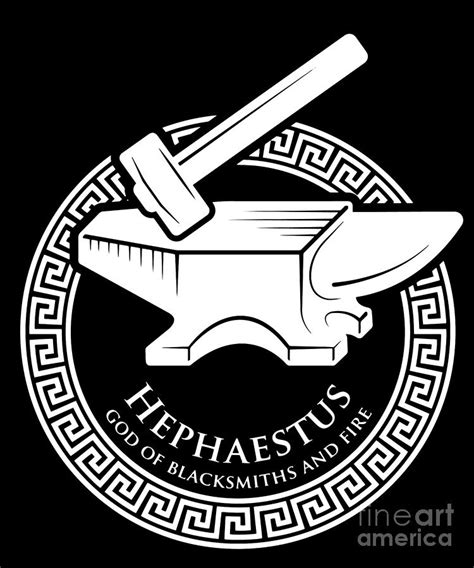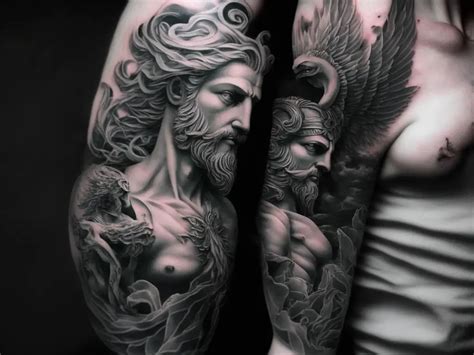The symbols associated with Hephaestus, the Greek god of fire, blacksmiths, and inventors, offer a fascinating glimpse into the mythology and cultural significance of this complex deity. As the son of Zeus and Hera, Hephaestus was often depicted as a powerful, yet lame, figure, mastering the arts of fire and craftsmanship. His symbols reflect his role as a creator, a problem solver, and a deity closely tied to the elements of fire and earth.
Primary Symbols of Hephaestus

Among the primary symbols associated with Hephaestus are the hammer, tongs, and anvil. These tools of the blacksmith’s trade not only reflect Hephaestus’ role as a master craftsman but also symbolize his ability to shape and mold the raw materials of the earth into objects of beauty and utility. The hammer, in particular, represents the power and strength that Hephaestus wielded in his workshop, forging weapons and armor for the gods and heroes of Greek mythology.
The Significance of Fire
Fire, as a symbol, is deeply intertwined with Hephaestus’ character and role in Greek mythology. It represents not only the creative and transformative power of the forge but also the destructive potential of uncontrolled flames. Hephaestus’ mastery over fire symbolizes his control over the primal forces of nature, highlighting his status as a god who could both create and destroy with precision and purpose.
| Symbol | Significance |
|---|---|
| Hammer | Strength, craftsmanship, creative power |
| Tongs | Precision, control, manipulation of hot metals |
| Anvil | Endurance, shaping and molding, transformation |
| Fire | Creative and destructive power, transformation, purification |

Historical and Cultural Context

The worship and mythology surrounding Hephaestus were not limited to his symbols alone but were deeply embedded in the cultural and historical context of ancient Greece. As a god of the forge, Hephaestus was revered by blacksmiths and craftsmen, who saw in him a patron and protector of their trades. The association of Hephaestus with fire and the earth also linked him to the cycles of nature and the agricultural fertility of the land, further solidifying his importance in Greek religious and mythological narratives.
Evolution of Symbols Over Time
Over time, the symbols associated with Hephaestus have evolved, influenced by various cultural and artistic interpretations. In ancient Greek art, Hephaestus was often depicted with his characteristic tools, emphasizing his role as a craftsman and inventor. In later periods, the emphasis on his symbols may have shifted, with some interpretations focusing more on the element of fire as a symbol of purification and transformation, reflecting broader philosophical and religious trends in the Mediterranean world.
Key Points
- Hephaestus' symbols, such as the hammer, tongs, anvil, and fire, reflect his dual role as a creator and a destroyer.
- These symbols are deeply rooted in the mythology and cultural practices of ancient Greece, particularly in the reverence for craftsmanship and the cycles of nature.
- The interpretation and depiction of Hephaestus' symbols have evolved over time, influenced by artistic, cultural, and philosophical developments.
- Understanding these symbols provides insight into the complex character of Hephaestus and his significance in Greek mythology.
- The study of Hephaestus and his symbols also highlights the importance of craftsmanship, invention, and the human relationship with nature and the elements.
In conclusion, the symbols of Hephaestus offer a nuanced and multifaceted insight into the character and role of this important god in Greek mythology. Through his association with the hammer, tongs, anvil, and fire, Hephaestus embodies the principles of creativity, transformation, and the mastery of primal forces, serving as a powerful symbol of human ingenuity and the enduring appeal of mythological narratives.
What are the primary symbols associated with Hephaestus?
+The primary symbols associated with Hephaestus are the hammer, tongs, anvil, and fire, which reflect his role as a master craftsman and his control over the elements.
What does the symbol of fire represent in the context of Hephaestus?
+Fire represents the creative and transformative power of the forge, as well as the destructive potential of uncontrolled flames, symbolizing Hephaestus’ mastery over primal forces.
How have the symbols of Hephaestus evolved over time?
+The symbols associated with Hephaestus have undergone evolution, influenced by cultural, artistic, and philosophical developments, with shifting emphases on his role as a craftsman, inventor, and master of the elements.



